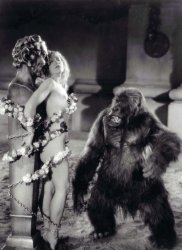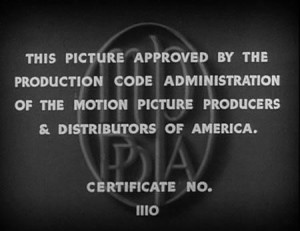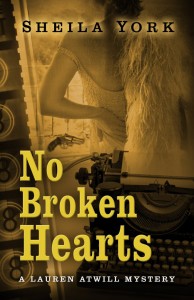 Relevant History welcomes Sheila York who, after a successful career in TV and radio, began writing novels combining her love of mystery, history and the movies. Her series features screenwriter Lauren Atwill (and her lover, private detective Peter Winslow) chasing killers in the last hurrah of the Great Golden Age of Film. Sheila’s first novel, Star Struck Dead, won a Daphne du Maurier award. Lauren’s latest adventure, No Broken Hearts, was praised by Charles Todd: “If you love a terrific mystery, York is a must read!” To learn more about her and her books, visit her web site, and follow her on Facebook and Twitter.
Relevant History welcomes Sheila York who, after a successful career in TV and radio, began writing novels combining her love of mystery, history and the movies. Her series features screenwriter Lauren Atwill (and her lover, private detective Peter Winslow) chasing killers in the last hurrah of the Great Golden Age of Film. Sheila’s first novel, Star Struck Dead, won a Daphne du Maurier award. Lauren’s latest adventure, No Broken Hearts, was praised by Charles Todd: “If you love a terrific mystery, York is a must read!” To learn more about her and her books, visit her web site, and follow her on Facebook and Twitter.
*****
Censorship has a long, complicated history in America. Don’t worry, I’m going to spare you that.
Instead, we’re going on a short, high-points tour of the censorship of American film. Ah, maybe you didn’t know movies were once heavily censored. You thought in all those Golden Age films when passion overcame lovers, they just naturally pressed their cheeks together and faced the camera rather than locking lips. And never noticed the lack of cleavage and that nobody got away with a crime.
There were, you see, rules. They were called the Production Code, and they controlled the content of American films from 1934 until replaced with an early form of our ratings system in the late 1960s (following years of rebellion by filmmakers and audiences).
OK, here’s our first stop: the very first line of the Production Code.
No picture shall be produced which will lower the moral standards of those who see it.
Wow. You’ve got to wonder what led to that.
The power of silents
The impact of silent films is hard to imagine today, in an age of instant communication, but they were our first shared national cultural experience. Across the country audiences thrilled to the same movies with the same stars, and devoured the same fan magazines (a new sensation) awash in stories about them. American film stars were the most famous people in the world – Fairbanks, Swanson, Chaplin, Pickford, Keaton, Valentino.
However, silent films had no rules, and pretty quickly communities and religious groups worried about movies’ influence, and what some filmmakers were up to: flouting conventional morality, ridiculing authority, reveling in sexual innuendo, and joking about drunkenness and drugs.
By 1921, five states—Pennsylvania, Ohio, Maryland, Kansas, and New York—had established censorship boards. With nearly 30% of America’s ticket sales, they had the muscle to ban individual films in their states or delete scenes they deemed inappropriate. Some cities followed suit. After traveling through a few towns, a film could be rendered incomprehensible.
Some citizens thought the federal government should control films.
We can police ourselves. Yeah, sure.
In 1922, the major studios formed the Motion Picture Producers and Distributors of America and picked Will Hays, a man well connected in Washington, to run it. The best the MPPDA could do was create a long list of content guidelines, “The Don’ts and the Be Carefuls”. Compliance was voluntary.
The sound and more fury
 In the late 1920s, films began to speak; reformers could be shocked by what they saw and heard. And they saw and heard plenty. When the Depression cut into box office, studios discovered sex and violence could sell tickets. Tommy-gun-toting gangsters ruled in films like Little Caesar. Mae West brought her shocking double-entendres to Hollywood.
In the late 1920s, films began to speak; reformers could be shocked by what they saw and heard. And they saw and heard plenty. When the Depression cut into box office, studios discovered sex and violence could sell tickets. Tommy-gun-toting gangsters ruled in films like Little Caesar. Mae West brought her shocking double-entendres to Hollywood.
 And Mr. DeMille made a movie called—I’m not kidding—The Sign of the Cross. Orgies, Christians sacrificed, Claudette Colbert bathing naked. The theory seems to have been that this would demonstrate Roman degeneracy.
And Mr. DeMille made a movie called—I’m not kidding—The Sign of the Cross. Orgies, Christians sacrificed, Claudette Colbert bathing naked. The theory seems to have been that this would demonstrate Roman degeneracy.
Maybe Mr. De Mille just couldn’t control himself.
Hey, what about a Code? It was already there.
The Code was written in 1929 by a priest named Daniel Lord and Martin Quigley, a movie-industry-publication owner (and devout Catholic). Quigley (and many others) lobbied for its adoption. Studio heads agreed, but the administration they created in 1930 had only the power of persuasion.
In response, the Catholic Church developed its own ratings system. Then came their Legion of Decency. Its pledge’s first line gives you some idea of how the Church felt: I wish to join the Legion of Decency, which condemns vile and unwholesome moving pictures.
 Finally the MPPDA ceded full power to control content. Beginning 1 July 1934, films could not be distributed without the Code seal of approval. The Code finally had teeth. Joe Breen, a public relations man and movie lover with excellent Church connections, ruled the Code Office for the next twenty years.
Finally the MPPDA ceded full power to control content. Beginning 1 July 1934, films could not be distributed without the Code seal of approval. The Code finally had teeth. Joe Breen, a public relations man and movie lover with excellent Church connections, ruled the Code Office for the next twenty years.
His office screened books/plays whose rights the studios were considering purchasing. Studios submitted draft scripts for early advice. While filmmakers could negotiate (and the Code Office would sometimes change its mind), they had to get approval of their shooting scripts and the final cuts of their films.
So this, briefly, is how we ended up with movies striving not to lower moral standards, in which adultery could never be justified and marriage was sacred. No nudity or suggestive costumes. No excessive kissing or drinking. Justice must triumph.
Here are a few of my favorites from the 1940s, the decade in which my heroine must grapple with the Code, with some Code notes you might enjoy.
The Best Years of Our Lives (46): The Code Office wanted all drinking eliminated. Try handling that when your script has a crucial bar-hopping scene.
The Big Sleep (46): Notice how much sexual innuendo they get away with in the bookstore.
The Blue Dahlia (46): In the original script, the wounded ex-Navy flyer (William Bendix) was the killer. Shown the script, the Navy objected. The movie got a new killer.
Casablanca (42): The censors forbade any overt indication that Captain Renault exchanged visas for sex; notice Strasser must draw his gun before Bogart can fire.
Crossfire (47): The murder victim in its source novel, The Brick Foxhole, was homosexual. Breen called it “completely unacceptable.” The victim became Jewish. The writer made sure to give him a girlfriend.
Double Indemnity (44): The poignant ending was made possible because the Code Office forbade any portrayal of an execution in early notes.
The Lady Eve (41): Check out Stanwyck/Fonda nuzzling in her stateroom. Pretty hot, but notice she’s on a chaise and he’s on the floor.
The Maltese Falcon (41): The Code Office forbade the suggestion of Spade’s affair with his partner’s wife (though it’s still crystal clear).
Notorious (46): It’s amazing this movie ever got made: a woman of loose morals as the heroine? Screenwriter Ben Hecht is my hero.
Rebecca (40): No one can get away with murder. The book’s resolution changed.
*****
 A big thanks to Sheila York. She’ll give away hardback copy of No Broken Hearts to someone who contributes a comment on my blog this week. I’ll choose the winner from among those who comment by Friday at 6 p.m. ET. Delivery is available in the U.S. only.
A big thanks to Sheila York. She’ll give away hardback copy of No Broken Hearts to someone who contributes a comment on my blog this week. I’ll choose the winner from among those who comment by Friday at 6 p.m. ET. Delivery is available in the U.S. only.
**********
Did you like what you read? Learn about downloads, discounts, and special offers from Relevant History authors and Suzanne Adair. Subscribe to Suzanne’s free newsletter.
